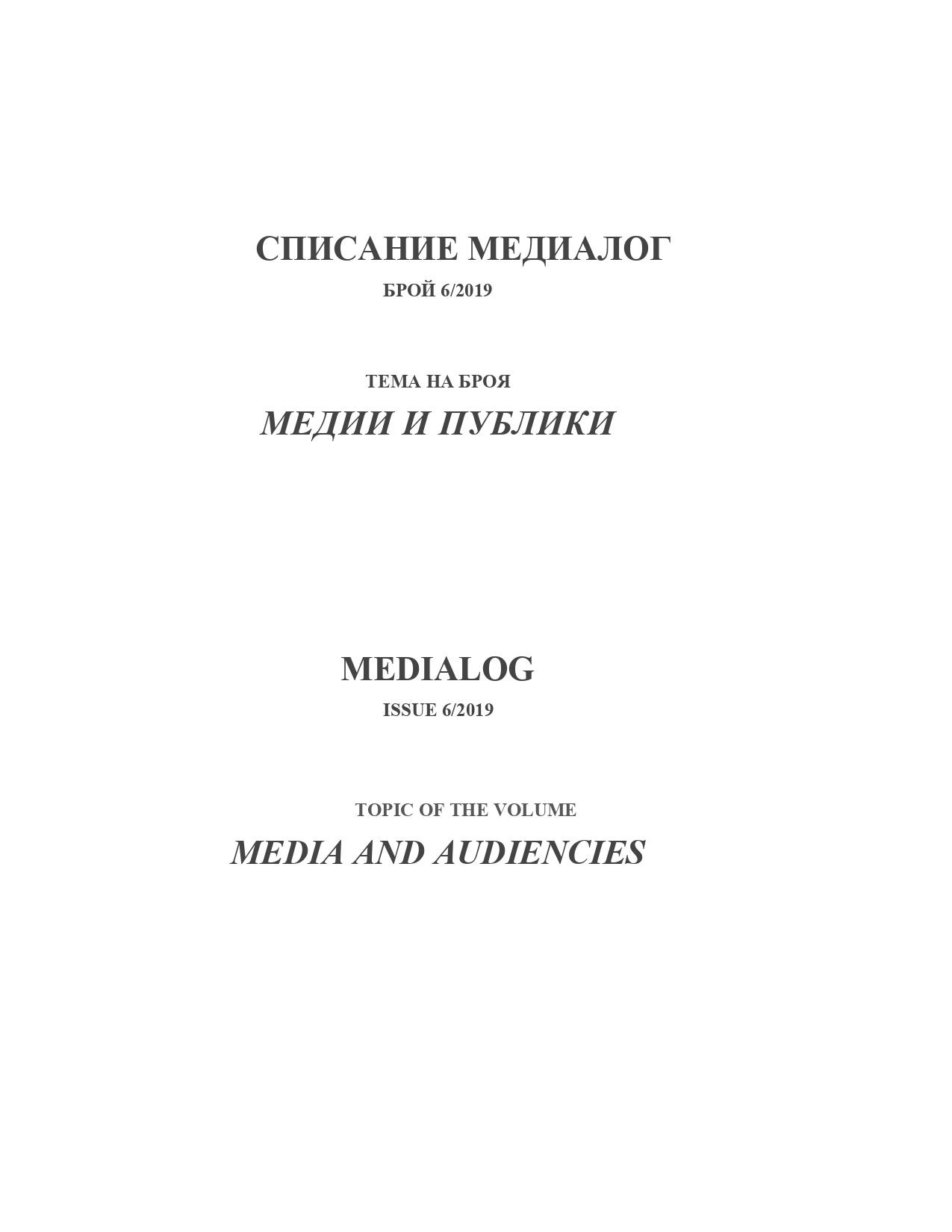
Научен отзив за международната научна конференция „На терен в културата: автентично, зрелищно, (не)видимо”
Conference report on the International Science Conference ‘Culture as Fieldwork: Authentic, Spectacular, (In)visible'
More...We kindly inform you that, as long as the subject affiliation of our 300.000+ articles is in progress, you might get unsufficient or no results on your third level or second level search. In this case, please broaden your search criteria.

Conference report on the International Science Conference ‘Culture as Fieldwork: Authentic, Spectacular, (In)visible'
More...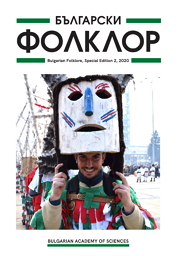
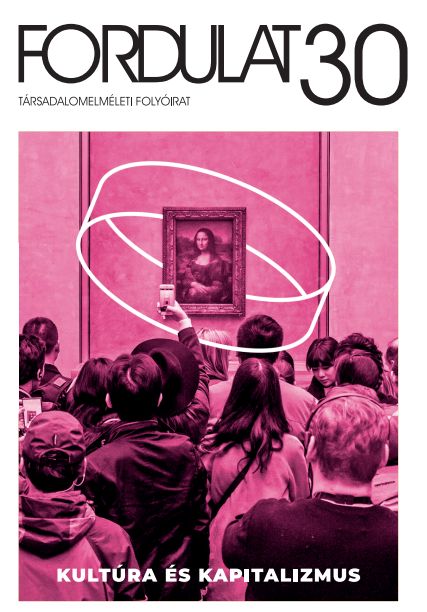
Our study demonstrates that the analysis of culture should be embedded into the history of capitalism. Through this understanding of culture's materiality, we highlight that culture is not only a spiritual but also a materially embedded phenomenon. We argue that this analysis is also essential to outline culture's role in a post-capitalist world.Our study offers four perspectives to analyze the diverse, often indirect, relationship between culture and capitalism. We show how the diversity of culture is more than heterogeneity but rather part of class conflicts and struggles. By examining the cultural institutions, our paper points out that they play a crucial role in the reproduction of the laborforce. It also points out that global and nation-state-led cultural production are not contradictory but entangled phenomena. Finally, our paper emphasizes that the relationship between culture and capitalism cannot be understood as abstract laws but must also always consider the social trajectories of professional cultural producers, who are a central but often invisible dark matter.
More...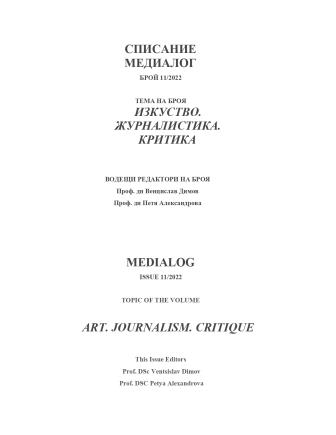
In the 50-ies and beginning of the 60-ies two great film critics and historians Paulo Emilio Salles Gomes and Alex Viany have a fundamental impact on the Brazilian Cinema novo and influence its flourishment and world recognition. With their erudition, knowledge of world cinema processes, huge critic’s activity and “militant cinephily” they educated and guided the young directors towards professional achievement and the search of national identity applying originally the lessons of the Italian neorealism and the French New wave. Their contribution to the revelation of the national film legacy, the new film movements, the foundation of a modern Film archive, the inauguration of the film education in Brazil and the oldest film festival in the country is undeniable.
More...
The text reviews the scientific monograph of Nurie Muratova ‚Women beyond the Archive. Invisible Histories of Women in Bulgaria‘, published by University Press ‚Neofit Rilsky‘ in Blagoevgrad. The book explores the place in the Bulgarian and world archives of two marginalized social groups – women and women with minority status. It is established that their visibility and invisibility, accessibility and secrecy, significance and underestimation depend on certain archival policies, social conditions, social stereotypes and prejudices.
More...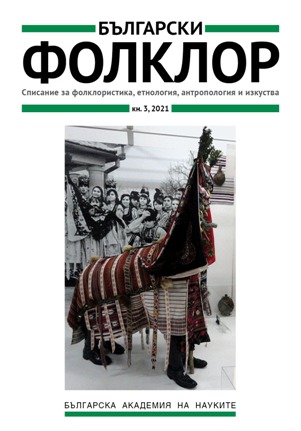
The article studies the winter masquerade custom of Turka, as the central object of investigation is its variant from the Romanian village of Cuciulata in Transylvania. In the course of more than a century, the outlook of this mask has remained almost unchanged. The author offers analyses on the altering functions of the mask as an artefact playing the roles of a ritual object and a museum exponent.
More...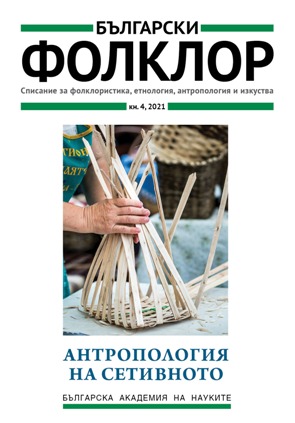
The article offers observations and preliminary notes from the study of cultural heritages with a focus on sensory images and their perception, expression, and communication. Sensory and visual anthropology are applied as research tools in the context of their complementarity and adequacy in regards with specific spheres of study. The author presents some results of her fieldwork in the form of visual archives and short anthropological films, which give further knowledge of the senses and their instrumentalisation for the generation of meanings and values.
More...
The aim of the article is to outline and analyse the relationship between fashion and cultural heritage as a source of inspiration for fashion designers. Several examples of French fashion houses are considered, and fashion as art is discussed. In the highly competitive context of modern global fashion and luxury industry, creative practices and processes can be viewed in direct connection with cultural heritage. The interaction between cultural heritage and the creative process is strategic. It works at all levels and includes all components of the production chain, integrating the creation, design, production, and communication. Fashion designers, along with their aesthetic canons, rediscover archetypes, values and imagination, but rethink them in an appropriate, concrete and creative way. The designers offer new visions and meanings, as they experience original processes and approaches. Furthermore, they introduce social, political and cultural issues into the design philosophy, apply new craft skills in the design process or even utilize music and youth culture into the heritage of brands. In this way, cultural heritage is rediscovered as a modern and contemporary design.
More...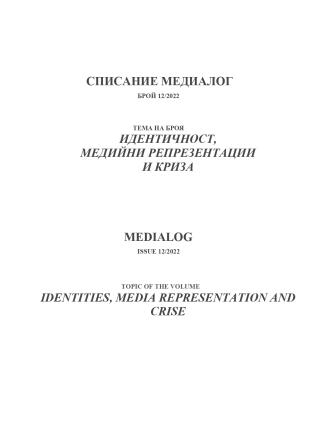
The article examines the National festival of folklore in Koprivshtitsa – a culmination of the assembly-singing movement – by looking for sustainable media representations of the folklore festivals, which has already been held for twelve editions (between 1965 and 2022). The mechanisms for organization and media coverage are sought in the chronological lines before and after 1989. The focus is on the discourses and presentation of the festival as a manifestation of collective and national identity, “the face of Bulgarianism”
More...
We publish a conversation of the journalist Irina Nedeva with Roumen Avramov, economist and historian, on the occasion of the Bulgarian translation of Nadège Ragaru’s book ‘Et les Juifs bulgares furent sauvés…’. Une histoire des savoirs sur la Shoah en Bulgarie’, Sciences Po. Les Presses, 2020) (“And the Bulgarian Jews were saved...” History of knowledge about the Holocaust in Bulgaria”). The conversation was broadcast on November 8, 2022 in the “Horizont do obed” ("Horizon by noon") program of the Bulgarian National Radio; the text published here is a transcription of it. The questions have been preserved, and in the answers Rumen Avramov has made some stylistic edits, as well as brief substantive additions and clarifications
More...
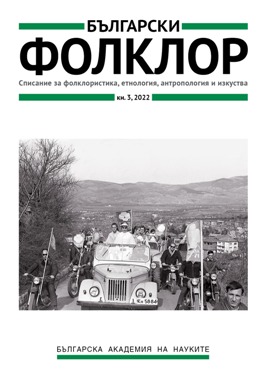

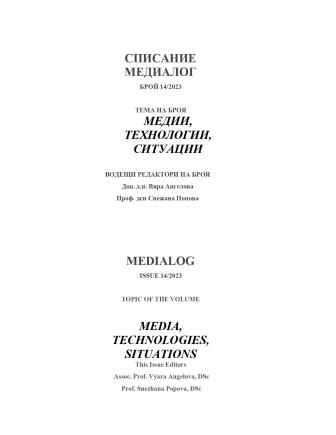
The present text, which is an edited excerpt from a master's thesis titled „The Video Archives Podcast as a Communicative Space“, seeks to roughly delineate the boundaries of the podcast space as a place where the technological and the human converge. By analyzing and comparing theories of podcast practices and communication theories before the advent of podcasting, the text attempts to overcome the opposition of novelty and tradition and concludes that the coexistence of man and media resembles not a war but rather a game of worlds.
More...
This article examines the imperfections of the Bulgarian media system, which periodically manifest as media crises. The research method used is a case study. The case, which is described and placed in a media and political context, is related to the suspended broadcast of the "Horizon" program on the Bulgarian National Radio on September 13, 2019. The analysis is based on the documents collected in Vyara Angelova's book "#Who stopped BNR", normative acts issued by Bulgarian and European institutions, scientific and media publications on the subject. The conclusions reached by the research are that the media system in Bulgaria is in an unfinished process of transformation. A specific feature of the media environment is that partial elements characteristic of free societies are noticeable. But the factors that dominate bring the Bulgarian media system closer to the authoritarian model defined by Fred Siebert, Wilbur Schramm, and Theodore Peterson.
More...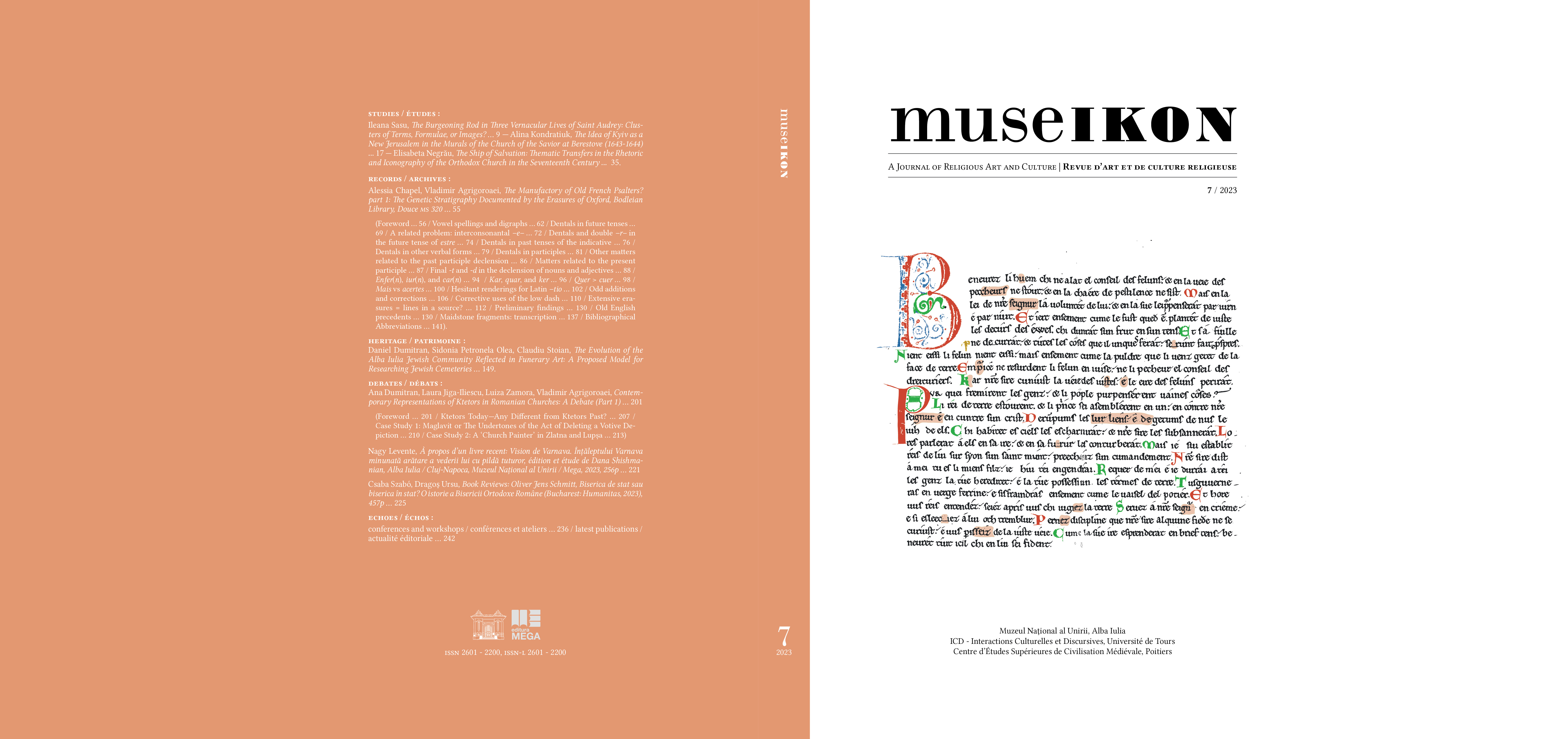
Ajunsă în stare de ruină, biserica Mântuitorului de la Berestovo a fost restaurată între 1643–1644 de mitropolitul Petru Movilă al Kievului, cu intenția de a-l comemora pe prințul Volodymyr, sfânt și egal cu apostolii, cel prin care a fost botezată Rusia kieviană. Pictura murală și inscripțiile reflectă ideea transformării Kievului într-un oraș sfânt, un nou Ierusalim și, în același timp, indică succesiunea neîntreruptă a autorității mitropolitane stabilită de prințul Volodymyr. Această decorație murală realizată în secolul al XVII-lea urmează programe iconografice mult mai vechi, asemănându-se cu cele din vremea Renașterii macedonene. Tabloul votiv îi înfățișează pe Născătoarea de Dumnezeu, pe prințul Volodymyr și pe Petru Movilă stând înaintea lui Hristos, Movilă fiind cel care îi prezintă Mântuitorului macheta bisericii restaurate. O analiză comparată permite afirmația că noua pictură a bisericii Mântuitorului a avut ca model ansamblul monumental al bisericii Sfânta Sofia din Kiev, datând din secolul al XI-lea. Puternica insistență asupra temei Încarnării, tipică polemicilor post-iconoclaste, a fost inspirată de imaginea în mozaic a Maicii Domnului Orantă din catedrala Sfânta Sofia și de inscripția care o însoțește și care reproduce versetul 6 al Psalmului 45. Imaginarea Kievului ca Nou Ierusalim și punerea lui sub protecția Maicii Domnului au fost gândite de Petru Movilă ca pietre de temelie ale efortului său de reactivare a Mitropoliei Kievului.
More...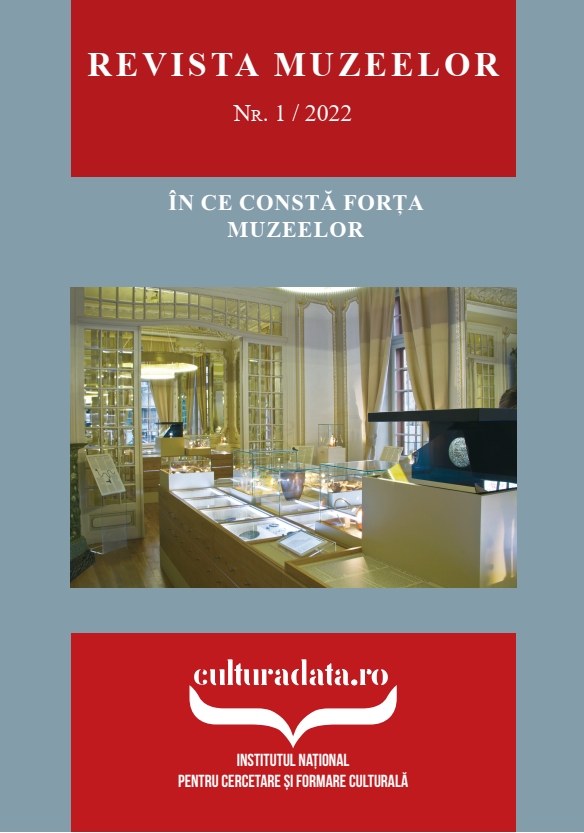
The study presents the graphic works of six modern female artists that are part of the Tulcea Fine Arts Museum`s heritage. Their work, presented in the context of the modern period of development of fine arts in our country, is prefaced by a comparative analysis between feminism and the feminine in art, starting from the general understanding of the concept of feminism. The article aims to promote the graphics collection of the Tulcea museum and to provide a starting point for future analytical studies.
More...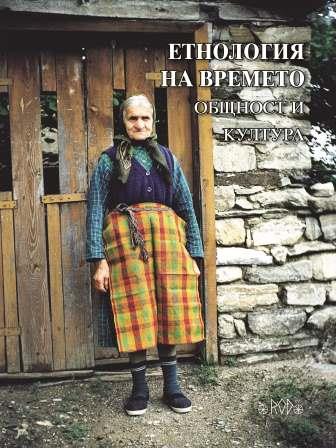
The report presents specific monuments from different periods in Thrace – megalithic, Thracian, Roman, early Christianity and Ottoman period. These monuments are sacral buildings or remains of destroyed sacral buildings, which on some occasion were buried with an earth mound. The most likely reason for this act is the desire to protect the holy places from destruction, further destruction, or desecration. This ritual tradition has survived on our lands for almost three millennia, although not universal and with varying intensity in different epochs.
More...
The text presents a possible anthropological perspective on the topic of memorial practices in Germany, linked to the problem of guilt and its overcoming through the dynamization of cultural memory. The thesis of guilt, being an element of the contemporary process of creating places of memory, is based on observations on memorial places for deserters. They may not be many in number (compared to monuments of other social or political victims in the history of Germany), but are becoming a catalyst of the dynamic process of building monuments called Denkmalarbeit. Indicative of the problem are the long, sometimes even paradoxical processes surrounding the decision-making for such monuments: their place, the artistic realization of every project, the accompanying public events, speeches and comments, the forms of implant. The mentioned factors, together with the conclusions of the observation, create a new sphere in the cultural memory of German society, related to changes in public attitude towards deserters and a search for new forms of memory in the process of acknowledging and overcoming guilt.
More...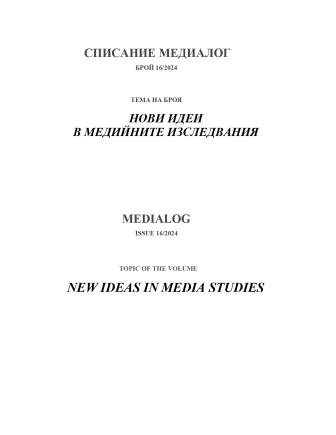
A review of the book "Process Approach in Education. Development of Key Competences through Philosophy and Civic Education. Theory and Practice" (published by the Bulgarian Academy of Sciences "Prof. Marin Drinov", 2024, 350 p. ISBN 978-619-245-430-2). The monograph examines the theoretical and practical aspects of the possibilities of forming the competencies of critical thinking, creativity, civic engagement and media literacy through the teaching of philosophy and civic education.
More...